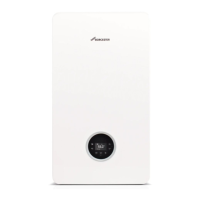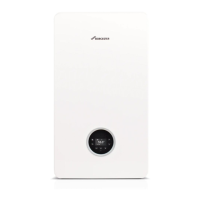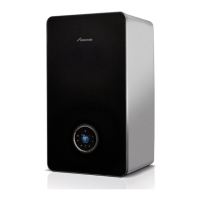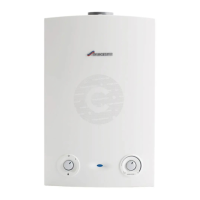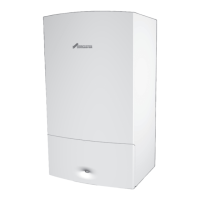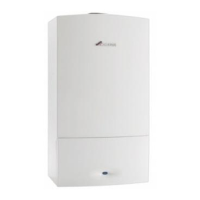Pre-Installation
Greenstar 8000 Life – 6720883866 (2019/04)
26
NOTICE:
Condensate waste disposal
▶ Care should be taken when siting a soak-away to avoid causing
damage to existing services and building footings.
If no other discharge method is possible then the use of an externally run
condensate drainage pipe terminating at a suitable foul water discharge
point, or purpose-designed soak away, may be considered. If this
method is chosen then the following measures should be adopted:
▶ The external run be kept as short as possible and should not exceed
three metres.
Additional precaution against freezing must be taken if the external
pipe run exceeds 3m.
▶ The pipe should be run internally as far as possible before going
externally and the pipe diameter should be increased to a minimum
internal diameter (ID) of 30mm before it passes through the wall to
the exterior. The pipe should be insulated externally using suitable
waterproof and weather resistant insulation.
▶ The hole through the wall for the condensate pipe should be sealed to
the building fabric on the internal and external face using a suitable
building material.
▶ The external pipe should take the shortest and least exposed route to
the discharge point, and should "fall" as steeply as possible away
from the appliance, with no horizontal runs in which condensate
might stand.
▶ The use of fittings, elbows etc. should be kept to a minimum and any
internal burrs on cut pipe work should be removed so that the internal
pipe section is as smooth as possible.
▶ All external pipe drainage will be improved if the end is cut at 45° as
opposed to a straight cut.
▶ In situations where there are likely to be extremes of temperature or
exposure, the use of a proprietary trace-heating system for external
pipe work, incorporating an external frost thermostat, should be
considered. All other guidance above and the instructions for the
trace heating system, should be closely followed.
▶ As well as trace heating, other methods of protecting pipe work that
is run externally should be considered to prevent freezing in
prolonged periods.
– Insulation materials can be used, these should be of class “O”
grade with an outer coating that is weather proof and have a UV
resistant finish. A minimum of 19mm thick insulation is
recommended for 32mm external pipes.
– The use of a drain cover (such as those to prevent blockage by
leaves) may offer further protection from wind chill.
– An air break on the external pipe work can reduce the risk of the
appliance being inoperable due to the blocking and backing up of
condense.
Rain water down pipe with external air break
Figure 35
• Refer to following example to dispose of condensate to a rain water
down pipe.
• An air break or rain water hopper must be utilised, between the
appliance condensate outlet and the drainpipe, outside the property,
to avoid flooding of the appliance should the downpipe become
obstructed.
Fig. 35 Disposal into rain water down pipe
[1] Condensate discharge from appliance
[8] Pipe work transition
[9] Insulate and increase pipe size
[10] External rain water pipe to foul water
[11] External air break
[12] Air gap
[13] Strap-on fitting
[14] 43mm 90° male/female bend
[20] Rain water hopper
9
10
11
12
13
14
8
1
9
8
1
10
12
20
0010012784-002
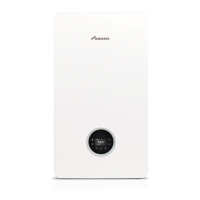
